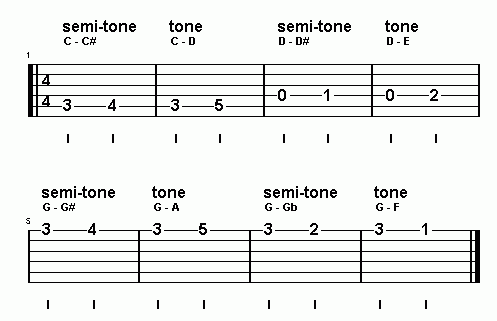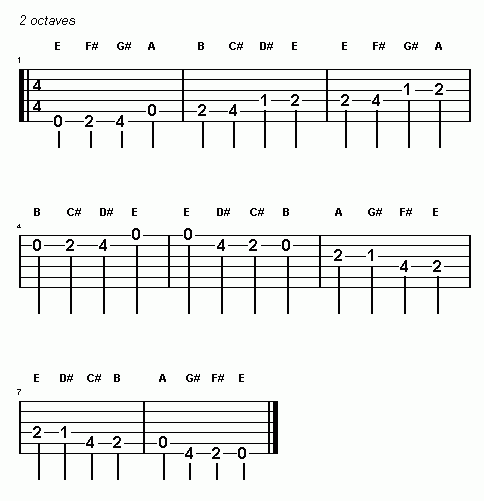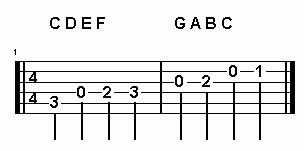If you play a note on the guitar and then play a note two frets higher or lower, you are playing notes a tone apart. If you don't skip a fret, you are playing notes a semi-tone apart.
|
Tones and Semi-tones |
|
|
Tones and Semi-tones |

At this point of playing semi-tones and tones, the ear should be trained to recognise these two intervals. The best way to do this is to memorise how each of them sounds by playing them and listening closely. Have a friend or family member play them on your guitar and try to guess if they are playing notes a semi-tone or tone apart.
Humming the intervals is also a great way to memorise them. Think about all the songs you know. You memorise how they sound just by hearing them. Memorising your intervals is similar.
|
1st Position Chromatic Scale |
|
|
1st Position Chromatic Scale |

Playing a series of semi-tones is called a chromatic scale. Playing the chromatic scale in first position is a good finger exercise. First position (sometimes called open position) uses the first four frets of the guitar.
After playing each note the fingers tend to lift off the fingerboard so that only one finger is pressing down at a time. A more difficult finger exercise is to keep the fingers pressed down on each fret as they are played. When you play the 4th fret, all of the other fingers should still be on the fretboard. This trains the fingers to keep close to the fretboard and makes them more agile. If this is too difficult, try to keep as many fingers pressed as possible.
The Major Scale
The major scale is the foundation of music theory. It is the building Modules from which music is thought in terms of. Songs are played in keys. This is the scale that the song uses. They will either be in major or minor keys. For now we will focus on the major scale.
A major scale is built by playing:
| Tone | Tone | Semi-tone | Tone | Tone | Tone | Semi-tone |
|
E Major Scale - 2 Octaves |
|
|
E Major Scale - 2 Octaves |

C Major Scale
By starting on a C note and playing the sequence: tone, tone, semi-tone, tone, tone, tone, semi-tone, the C major scale is being played. In the key of C, the notes are all natural. This means that they are neither sharp or flat. Flat means a natural note is lowered one semi-tone. This is the flat sign b. Sharp means a note is raised one semi-tone. This is the sharp sign #.
The C major scale is: C, D, E, F, G, A, B, C.
|
C Major Scale |
